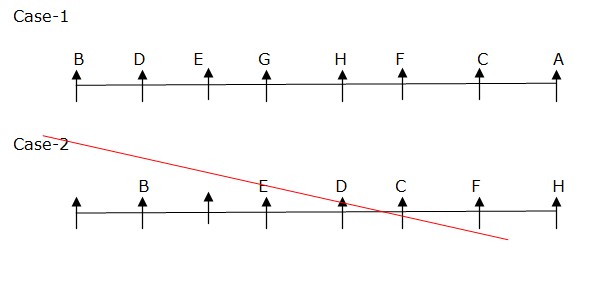Start learning 50% faster. Sign in now
We have, F sits fifth to the right of B. Only two persons sit between F and E. From the above conditions, there are three possibilities  Again we have, The number of persons sitting to the right of E is one less than the number of persons sitting to the left of C. Only one person sits between C and H. D sits third to the left of H. Here, Case-3 gets eliminated
Again we have, The number of persons sitting to the right of E is one less than the number of persons sitting to the left of C. Only one person sits between C and H. D sits third to the left of H. Here, Case-3 gets eliminated  Again we have, Only three persons sit between A and G, who doesn’e sit at the end of the row. So Case-2 gets eliminated. Hence Case-1 shows the final arrangement
Again we have, Only three persons sit between A and G, who doesn’e sit at the end of the row. So Case-2 gets eliminated. Hence Case-1 shows the final arrangement 
When is dehaulming done in potato crop?
The first stable product of C3 pathway is
Normalized Difference Vegetation Index (NDVI) of a crop can be measured by using?
T o which hybridisation techniques do the following examples belong to? Cross between two inbred lines of Maize_
What is the recommended spacing for Carrot plants in hybrid seed production?
The growth of agricultural ecosystems in a self-sufficient and sustainable way is referred as
A practice of removing a portion of a plant to enhance its shape, influence its development, flowering and fruitfulness and improve the quality of the f...
Scientific name of Guava is _____
Which of the following crop is a source methane and nitrous oxide emission into the atmosphere?
Gughia weevil is a pest of: